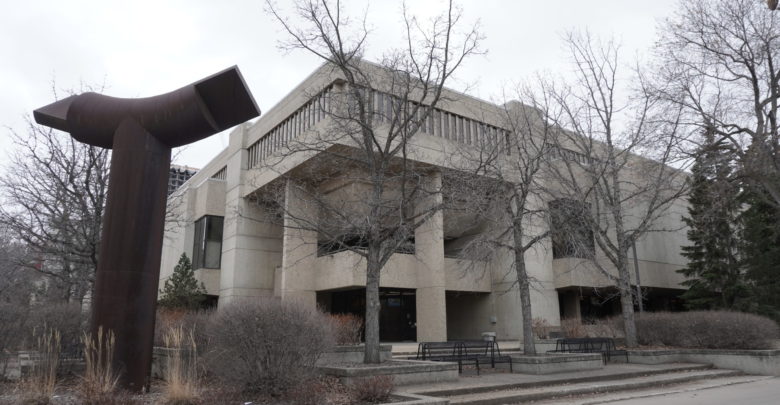U of A law student wins 2022 Holocaust Remembrance Essay Award
U of A law student won the Holocaust Remembrance Essay Award for her essay which recommended a restorative justice approach for cases of artwork stolen by Nazis.
 Jonas Smith
Jonas SmithGwyneth Pheasant Lust, a third-year law student at the University of Alberta, received the 2022 Holocaust Remembrance Essay Award presented by the U of A’s faculty of law.
The Holocaust Remembrance Essay Award is an international prize funded by U of A law alumnus Henry Wolfond. The award is given to the best essay written by a law student on topics pertaining to lawful practices and the Holocaust, with the prize being $2,300.
In her essay, Pheasant Lust suggested that legal approaches to restoring Nazi-looted art should be conducted using restorative justice and Alternative Dispute Resolution (ADR). ADR is a consultation strategy for disputes that helps both parties work together to form a mutually beneficial solution.
“In my argument, I say that restorative justice is easily attached to the alternative dispute resolution process because they are complementary,” Pheasant Lust said.
Scholars have defined four components of restorative justice: encounter, amends, reintegration, and inclusion. Pheasant Lust explained that these principles, alongside ADR, encourage the active involvement of the offender and victim in the legal process.
“Another part of ADR is reconciliation, which we are familiar with in Canada, given the atrocities that have happened to Indigenous peoples,” she said.
With governmental facilitation to maintain peace and order, Pheasant Lust highlighted that the restorative justice approach allows for parties to work together toward mutual understanding. Additionally, she discussed the importance of the victims-first approach.
“Restorative justice is saying, maybe we should be thinking about the person who has actually had the crime committed against them, and recognizing them, rather than just simply calling them the state.”
With cases of Nazi-looted art, Pheasant Lust said that while Holocaust survivors and their families are experiencing trauma in some form, the holders of Nazi-looted art in many cases are not the perpetrators themselves.
“There is an opportunity to come together and exchange reasons and why’s in a way that comes to a solution that’s mutually agreeable. Because litigation is confrontational, that’s the intent of it. Is that the best way in which we should approach Nazi-looted art?”
Pheasant Lust cited the cases of Guttman versus Searle, and the Federal Republic of Germany (FDR) versus Philip in her essay, which both demonstrated legal cases that use restorative justice strategies.
“They’re really influential as to how Nazi-looted art was viewed. Not only within the courts, but also within the community and what responsibilities we’re supposed to be taking.”
The case of Guttman versus Searle particularly demonstrates how restorative justice could be used, according to Pheasant Lust. The legal property in question was an 1890 painting by French artist Edgar Degas, titled Landscape with Smokestacks, which was stolen by Nazis during the war.
The case was resolved outside of the courts in 1998, and the piece was given to the Art Institute of Chicago by Searle and his family members who possessed the painting.
In the case of FDR versus Philip, the descendants of Holocaust victims living in the United States legally fought to repossess Nazi-looted art from Germany. Due to the Foreign Sovereignty Immunity Act (FSIA), they never repossessed their works, which was frustrating to Pheasant Lust.
“It’s very rigid, it’s black letter law. It completely overlooks the element of suffering, humanity, and the real visceral aspects of human interaction with cultural objects … with the art and the families, and also recognizing why it happened in the first place. That was the case that really set the tone for my entire paper.”
Pheasant Lust spoke about the plaque which accompanies the painting’s public display, which demonstrates a form of ADR and restorative justice.
“The Art Institute [of Chicago] now owns it in its entirety, but the way in which the painting has to be displayed is that there has to be literature to discuss what actually happened with this work of art. It has to talk about what the provenance was,” said Pheasant Lust.
In cases like these, she says that an alternative method such as restorative justice is needed.
“I think that there are some instances such as trying to come to terms with how to reconcile a stolen work of art, that had been stolen during something so horrific, that requires a different approach.”
After completing her law degree at the U of A, Pheasant Lust has applied to a graduate program with an interest in protecting cultural property and heritage in the events of armed conflict.
“Art has always been important to me. This is a special area of art history that I think can teach us ways in which to address current problems, and inform the ways in which we deal with those kinds of situations as we move forward.”




